 Petzlover
Petzlover Oriental Bicolour is originated from United States but Ussuri is originated from Russia. Both Oriental Bicolour and Ussuri are having almost same weight. Both Oriental Bicolour and Ussuri has almost same life span. Both Oriental Bicolour and Ussuri has same litter size. Both Oriental Bicolour and Ussuri requires Low Maintenance.
Oriental Bicolour is originated from United States but Ussuri is originated from Russia. Both Oriental Bicolour and Ussuri are having almost same weight. Both Oriental Bicolour and Ussuri has almost same life span. Both Oriental Bicolour and Ussuri has same litter size. Both Oriental Bicolour and Ussuri requires Low Maintenance.
 Oriental Bicolour cats owe their origins to Lindajean Grillo of Ciara Cattery. The cats hail from the United States. It was in 1979 that Grillo paired a Siamese and bicolored American Shorthair, selecting the best bicolored offspring to mate again with Siamese or Orientals.
Oriental Bicolour cats owe their origins to Lindajean Grillo of Ciara Cattery. The cats hail from the United States. It was in 1979 that Grillo paired a Siamese and bicolored American Shorthair, selecting the best bicolored offspring to mate again with Siamese or Orientals.
This particular variety was granted recognition in 1983 by TICA. It was during the 1980s that European breeders started their own Oriental bicolor breeding lines. The first modern Oriental Bicolours were imported to the UK during 2004.
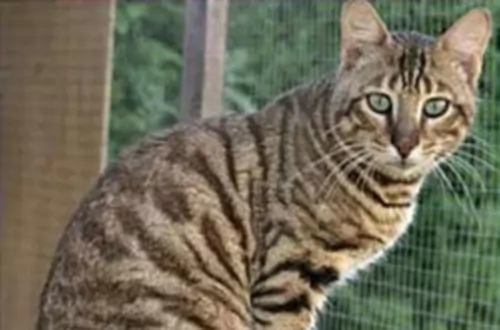 Not much is known about the Ussuri cat but it does seem to be a rare natural cat breed. The cat originates from Russia but is rare even in that country.
Not much is known about the Ussuri cat but it does seem to be a rare natural cat breed. The cat originates from Russia but is rare even in that country.
A breed standard for this cat was published in the 1990s, but nothing has been heard since and its breed status isn't clear. It does seem that the Ussuri's numbers are dwindling due to interbreeding with local domestic cats. Also, the cat doesn't have a breeding program and it is expected that the cat will just quietly disappear.
 These cats with a triangular-shaped head and slender, long body have a fairly thin tail. The ears are widely set and are large. The eyes are green, but blue with the colorpoint varieties.
These cats with a triangular-shaped head and slender, long body have a fairly thin tail. The ears are widely set and are large. The eyes are green, but blue with the colorpoint varieties.
The coat is short, close-lying and sleek while the coat of the long-haired variety is fine and silky with no thick undercoat. The tail forms a plume. The coat is mostly white and the other part of the coat can be in any other color. You’ll always see quite a bit of white around the legs.
These cats are suited for singles, couples, families, and seniors - in fact, anyone still active enough to provide this cat with lots of attention.
These vibrant cats are known for their social, friendly and loving personality. They are intelligent, inquisitive, active cats that need to have plenty of interaction with their human family members. They love their human family and love to hold conversations with them.
They're entertaining too, and love nothing more to ve the center of attention. They're so into their human family that you may even have him waiting patiently for you to come home fro work. He shouldn't be left alone for hours on end and should rather have a pet friend to keep him company during the day.
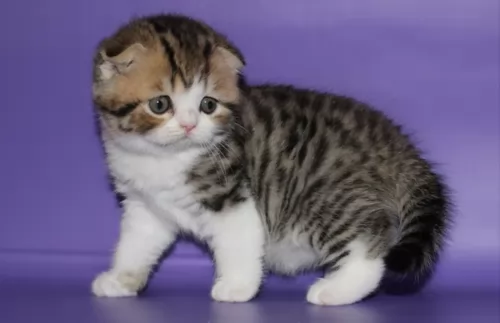 The Ussuri cat can be described as a medium-sized cat that weighs between 3 and 6kg.
The ears often have those tufts, similar to that of a lynx. The body of the Ussuri cat is muscular. The neck is firm, the legs medium length and muscular with rounded paws. The tail has a rounded tip. The coat is short and glossy and there is a thick undercoat.
It has a mix of spots with lines around the face.There are also line on the legs and the tail is ringed. It definitely lives up to looking like a wild cat.
The Ussuri cat can be described as a medium-sized cat that weighs between 3 and 6kg.
The ears often have those tufts, similar to that of a lynx. The body of the Ussuri cat is muscular. The neck is firm, the legs medium length and muscular with rounded paws. The tail has a rounded tip. The coat is short and glossy and there is a thick undercoat.
It has a mix of spots with lines around the face.There are also line on the legs and the tail is ringed. It definitely lives up to looking like a wild cat.
The Ussuri has a wild heritage, and domesticated, they are smart and intelligent. Of course, being on the wild side, they like to hunt and will present you with mice, rats, and birds. They are quite capable of forming strong bonds with their human owners, and tend to gravitate particularly to one member of the family.
 The Oriental Bicolor is such a wonderful pet to have. They are intelligent, entertaining, loving, active, playful, and inquisitive.
The Oriental Bicolor is such a wonderful pet to have. They are intelligent, entertaining, loving, active, playful, and inquisitive.
They’re also athletic and energetic. These cats have got all the characteristics you want in a good friend. They make a fantastic companion to people who are active and happy. They’re also very vocal and have a lot to say to their human family.
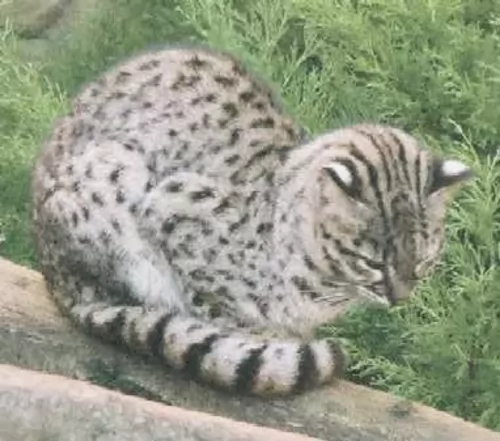 Ussuri Cats are very smart cats and they are able to adapt fairly quickly to their surroundings. Think twice before you invest in a Ussuri as they have different needs to your regular domestic cat.
These are cats that won't slot easily into indoor life and that is why you need to think carefully before you bring such a cat home as a pet.
While they can be affectionate to their human family, they are restless cats, wanting to get away to that wild life they once knew.
Ussuri Cats are very smart cats and they are able to adapt fairly quickly to their surroundings. Think twice before you invest in a Ussuri as they have different needs to your regular domestic cat.
These are cats that won't slot easily into indoor life and that is why you need to think carefully before you bring such a cat home as a pet.
While they can be affectionate to their human family, they are restless cats, wanting to get away to that wild life they once knew.
 Any cat can develop health problems. Even kittens that come with a certificate of health can develop illnesses that you never thought possible.
Any cat can develop health problems. Even kittens that come with a certificate of health can develop illnesses that you never thought possible.
Orientals are generally healthy cats, but the health issues that may affect the Oriental are similar to that of the Siamese cat.
One of these is Progressive Retinal Atrophy (PRA). This is a genetic eye problem that can lead to blindness. Another disease to look out for is Asthma. The Siamese is susceptible to this disease which means your Oriental Bicolor will also be. You will have to get your furry friend to the vet who may precribe anti-inflammatory drugs.
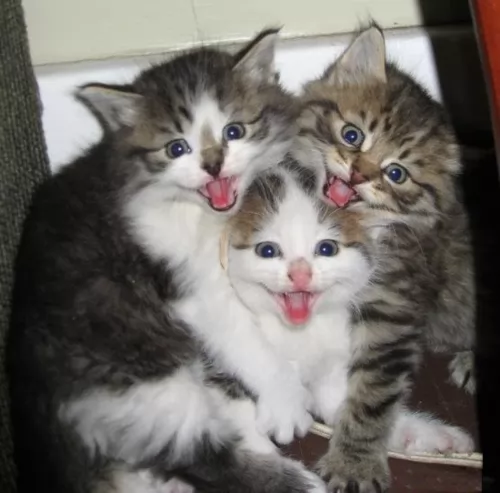 These are strong, robust cats, but even so, for your own peace of mind, a visit to the vet every now and them can be a good thing to make sure everything is aright with your cat.
Healthy they may be, but they can still pick up any one of the many common cat diseases there are.
With a good diet, plenty of exercise and a caring environment, they can reach 16 years of age or older.
These are strong, robust cats, but even so, for your own peace of mind, a visit to the vet every now and them can be a good thing to make sure everything is aright with your cat.
Healthy they may be, but they can still pick up any one of the many common cat diseases there are.
With a good diet, plenty of exercise and a caring environment, they can reach 16 years of age or older.
 The Oriental Bicolor will require a brushing once a week. A good idea is to also take a warm, damp cloth and to wipe your cat down. It’s an excellent way to rid your cat of loose hairs as well as dust. The cat has a sparse coat, so brush him gently.
The Oriental Bicolor will require a brushing once a week. A good idea is to also take a warm, damp cloth and to wipe your cat down. It’s an excellent way to rid your cat of loose hairs as well as dust. The cat has a sparse coat, so brush him gently.
Other grooming requires nail clipping and checking inside his ears. If you clean his ears, be careful not to go deep into the ear. It is precisely why so many cat owners take their cat to the pet groomers where they can do these things professionally.
It’s very important to keep your Bicolor’s litter box spotlessly clean because like most cats, they won’t use their litterbox if it’s still got yesterday’s feces in it. It needs to be cleaned every day.
The Oriental’s diet is much like that of other cats – it has to be meaty. You can’t afford to not understand your feline pet’s dietary needs. Cats are carnivorous and they need commercial cat food that will be equal to fresh meat that they would normally find in the wild.
They need foods high in protein but they will still need some carbohydrates, amino acids, and vitamins, and minerals. Always go for the best quality pet cat foods because by buying the poorer quality ones you put your cat at risk of developing health problems. Never ever leave your cat without a constant supply of fresh, cool drinking water.
Supply your cat with all the things that make it a pleasure to have a cat. You don’t want to bring your pet home and only then start looking for things to make him at home. He’ll need food and water bowls, a nice warm, soft bed, a litter box, grooming accessories, collar, toys climbing tree and scratching pole.
Have your pet neutered or spayed to prevent unwanted kittens.
Make sure he is taken to the vet when ill. You shouldn't own a pet if you can't afford to pay vet fees. There are some cat illnesses that can make your cat very sick and uncomfortable. He should have his vaccines and also be treated for parasites.
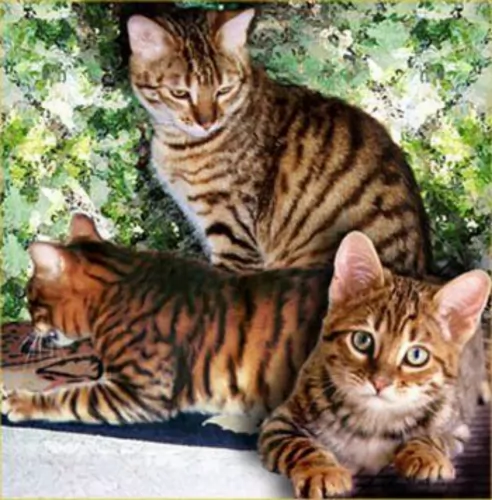 The short coat of Ussuri cats is glossy and close-lying, and a brush once a week will be fine for this cat.
Provide your pet with an outside enclosure. These are cats with a wild side, and to ensure you don't get frustrated with him, an enclosure with climbing equipment will be a good idea.
Ensure the cat gets plenty of exercise. You will need to invest in interactive toys that encourage this intelligent cat to think things out.
Only the very highest quality meat-diet will be good enough for this cat. Ensure he has a constant supply of fresh cool water.
In his outside enclosure, you can include a paddling pool, and in the wilds, cats like to paw at water and wade in.
Provide your pet with a comfortable sleeping area.
The short coat of Ussuri cats is glossy and close-lying, and a brush once a week will be fine for this cat.
Provide your pet with an outside enclosure. These are cats with a wild side, and to ensure you don't get frustrated with him, an enclosure with climbing equipment will be a good idea.
Ensure the cat gets plenty of exercise. You will need to invest in interactive toys that encourage this intelligent cat to think things out.
Only the very highest quality meat-diet will be good enough for this cat. Ensure he has a constant supply of fresh cool water.
In his outside enclosure, you can include a paddling pool, and in the wilds, cats like to paw at water and wade in.
Provide your pet with a comfortable sleeping area.